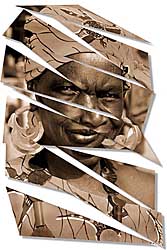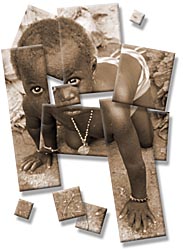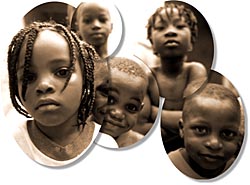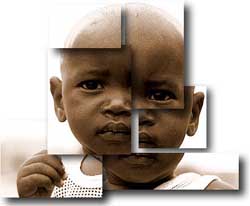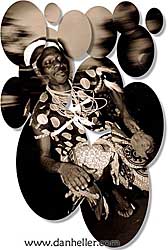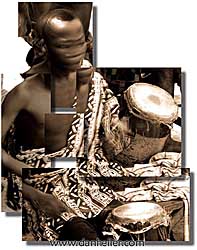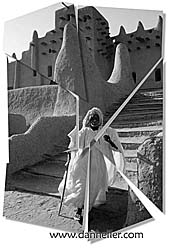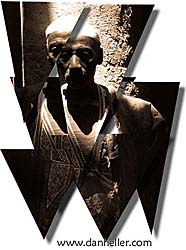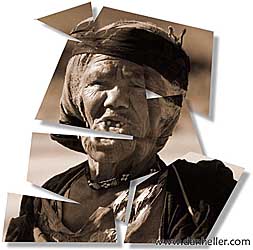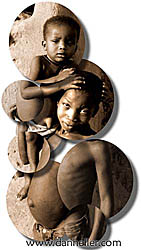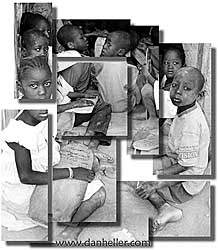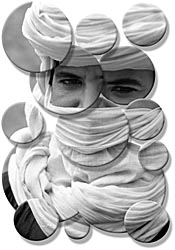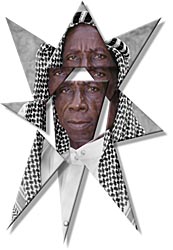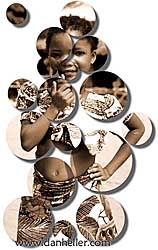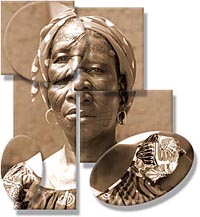|
Markers indicate locations for photos on this page.
Accuracy responsibility of Google Maps
Google Map Goes Here
If you see this text, the map is still loading (or there's an error). |
My goal with the Africa Montage series is two-fold: First, to present a thought-provoking series of artistically expressive portraits of the people who live in West Africa, and to explore how the imposition of outside influences has affected their lives. Second, to give context to the complexity of the issues they face, and to show how the outside world attempts to involve itself in response to those issues. The combination of these two goals is intended to give a depth of understanding and appreciation for the individuals who live there and the plight of their existence.
Most people see West Africa as a distant and foreign land, rife with poverty, illiteracy, AIDS and other diseases, and a collapsing governmental infrastructure. Some feel that it is a wild land that can never be tamed, while others feel it can be salvaged and built up into a modern civilization.
Understandably, my expectations were set by a variety of influences: TV commercials soliciting aid to poor and starving African children, news reports of rebel groups seizing power from ruthless dictators, and of course, anecdotal accounts of individuals' experiences. All of these sources seems to reflect (and fuel) the frenzy of going there (or doing something) to "help them." It reminds me of the following quote: "The problem with this country is that everyone that knows how to run it is too busy driving cabs and working as bar tenders."—Harry S. Truman
To my surprise, I found that my experiences differed considerably from the expectations that'd been set for me. I witnessed things and events that clearly showed evidence of the outside world trying in vain to "help", but what I actually found was a quiet sense of status quo about who
West African people are, like all of us, subject to the influences of their environment, good or bad, whether they want it or not. Africa is perceived to be especially vulnerable because they don't seem to have the resources to defend themselves, to compete in a global economy, to grow as a self-sustaining region, and sometimes, simply to survive. Thus, people on the outside want to "help." Some see economic opportunity, while others have altruistic intentions. But, what does it mean to "help"? To make them more like their benefactors? To impose
The culture of the region is based on tribal traditions, farming, and simple lifestyles. Accordingly, they do not suffer from many of the things in life that cause unhappiness in our culture. On the other hand, there are pitfalls associated with not having features that we in the West take for granted, like medicine and television. Some look upon the West African's way of life with envy, while others feel they are in desparate need of aid. However one chooses to judge them or attempt to effect change, it seems the same principle applies in Africa as does in physics: For every action, there is an equal and opposite reaction.
All the efforts from the outside has helped some people's lives to improve,
while others' lives have shattered.
In my opinion, the net result has been a zero-sum game; the picture remains
fundamentally the same, even though superficial changes have taken place.
First and foremost, there needs to be a swell of philosophical and intellectual thought. Just as Western culture evolved from the unification of peoples, ideas and philosophies, ranging from Socrates, Plato and other thinkers from many nations and cultures throughout our history, so too must the African culture have a fundamental coalition of thought and ideas for it to evolve. It's not to say that this should happen, but that any kind of change won't happen without this. This leads to unification of people, development of infrastructure, and evolution of culture. Nothing else can possibly do that work.
This leads to the meaning and purpose of this particular series of images. While the picture of the West African resident remains fundamentally intact, there is still evidence of disruption. While the effects of outside intervention may have minimal long term effects, the immediate effects on the individuals who live there today are apparent. The meaning of the images with their parts being pulled apart or broken, reflects the same kind of fragmentation people experience as a result of the outside influences. This can take many forms, some positive, others negative. Some structured and ordered, others random and hectic. Some aesthetically pleasing, while others a disarray of dangerously sharp edges that depict their new lifestyles in a modern world that doesn't seem to fit in.
Click to recommend this page: |
|
